Bitcoin and ETF traders are overstating the impact of GBTC selling
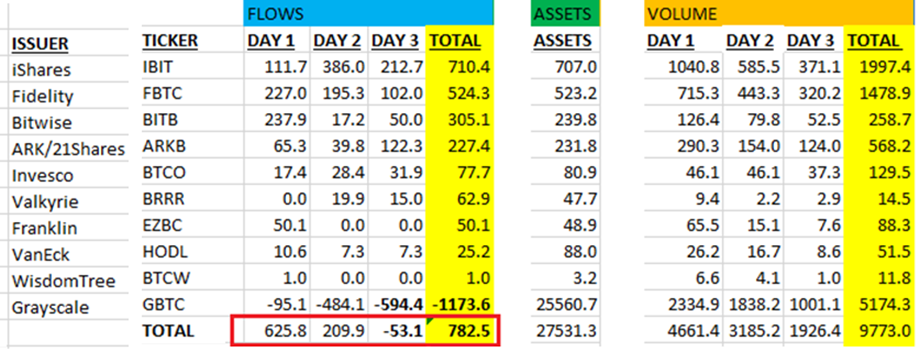
Grayscale GBTC outflows find a counterpart in net inflows to the remaining spot Bitcoin ETF funds. Here’s why it’s important.

The spot Bitcoin (BTC) exchange-traded fund (ETF) instrument debuted on Jan. 12. The first trading session was somewhat chaotic as investors had no clue as to what the actual inflow was, and the market makers themselves faced issues with the different liquidation timelines for each instrument. Still, the $4.66 billion volume on Bitcoin spot-based ETFs set a record high in the traditional finance industry, but is this enough to justify a Bitcoin price rally above $47,000?
Grayscale’s GBTC outflows offset most of the industry’s inflows
Some criticism emerged regarding the Grayscale GBTC, which previously existed as a Trust fund and held over $27 billion worth of BTC under management. In the first three trading days alone, this instrument experienced $1.17 billion of net outflows. Most of that movement happened on Jan. 13 and Jan. 16, balancing out 86% of the inflows to other spot Bitcoin ETFs in the period. In absolute terms, this translates to a mere aggregate $157 million net inflow in 2 days.

Most of the $782 million net inflow highlighted in the data originally presented by senior Bloomberg ETF analyst Eric Balchunas occurred on the first trading session. Due to its different settlement times, arbitrage desks were unable to exit their GBTC positions on Jan. 12. For instance, a short (negative) position on CME Bitcoin futures could have been used to offset the GBTC long (positive) to benefit from the discount that the fund shares used to trade prior to the spot ETF approval.
Critics are right to infer that most of the spot Bitcoin ETF inflows have been paired with outflows from the Grayscale GBTC, but even if one excludes the first trading day, there’s a total net $157 million 2-day inflow in the products issued by BlackRock, Fidelity, Bitwise, Ark/21 Shares, Invesco and the other ETFs. The question investors should think about is whether the exit from GBTC will continue and if the aggregate net inflow is sustainable in the long run.
Assuming the same pattern continues for the next month, meaning GBTC experiences an $11.3 billion net outflow while the remaining spot ETF contenders capture a $13 billion net inflow, what is the expected price impact of the $1.7 billion growth of the spot Bitcoin listed funds in the U.S.? From a trading perspective, the number seems quite irrelevant since those ETFs traded a combined $1.9 billion on Jan. 16 alone.
There is unquestionable ongoing demand for spot Bitcoin ETFs
Traders tend to confuse volumes and flow as, in every financial market, buyers and sellers are matched at all times. However, it is impossible to know if the seller is merely closing a position acquired earlier in the day or whether the buyer is doing the opposite trade in derivatives markets or at different exchanges to benefit from arbitrage opportunities.
Related: VanEck to delist Bitcoin Strategy ETF, citing performance and investor interest
One thing is for sure: given that, Grayscale GBTC’s fee is 1.5% while other contenders offer 0.25% or less, odds are investors will gradually migrate their holdings. So, regardless of whether it takes 20 or 120 days for this movement to reach some form of plateau as the GBTC holdings stabilize at a certain level, investors should focus on who is buying the remaining $157 million in two days.
I find it quite remarkable how the market keeps absorbing GBTC selling.
Someone is buying.
— Byzantine General (@ByzGeneral) January 17, 2024
X social network user ‘Byzantine General’ asked this exact question on Jan. 17, implying that there’s an actual ongoing demand for the spot Bitcoin ETFs. At current price levels, Bitcoin miners receive $76.1 million worth of newly issued coins every 2 days, so the recent spot ETF net inflows are slightly 2 times over that value. Plus, whatever the resulting price impact is, that will drastically change after the Bitcoin halving in April.
It seems premature to assume that the marginal spot ETF buying will continue to counterbalance the net outflow from Grayscale GBTC funds, and data could easily shift to favoring diminishing aggregate assets under management for the industry, including CME’s Bitcoin futures open interest. Still, Bitcoin bulls can celebrate that eventually the GBTC holdings will deplete or accommodate, paving the way for a bull run above $47,000 as investors realize the Bitcoin halving impact on the supply side.

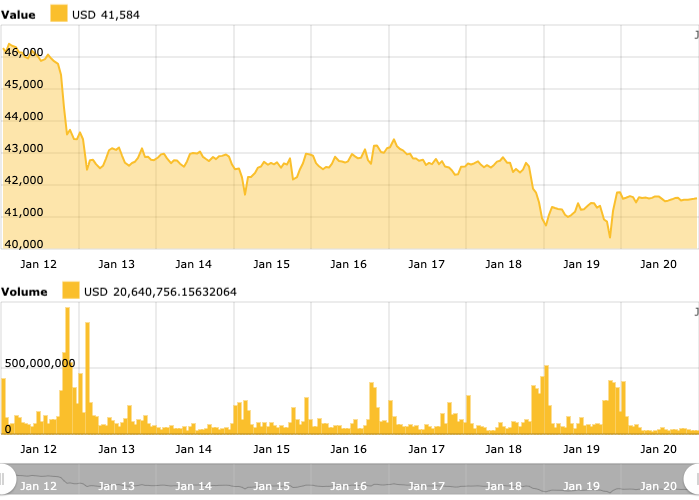

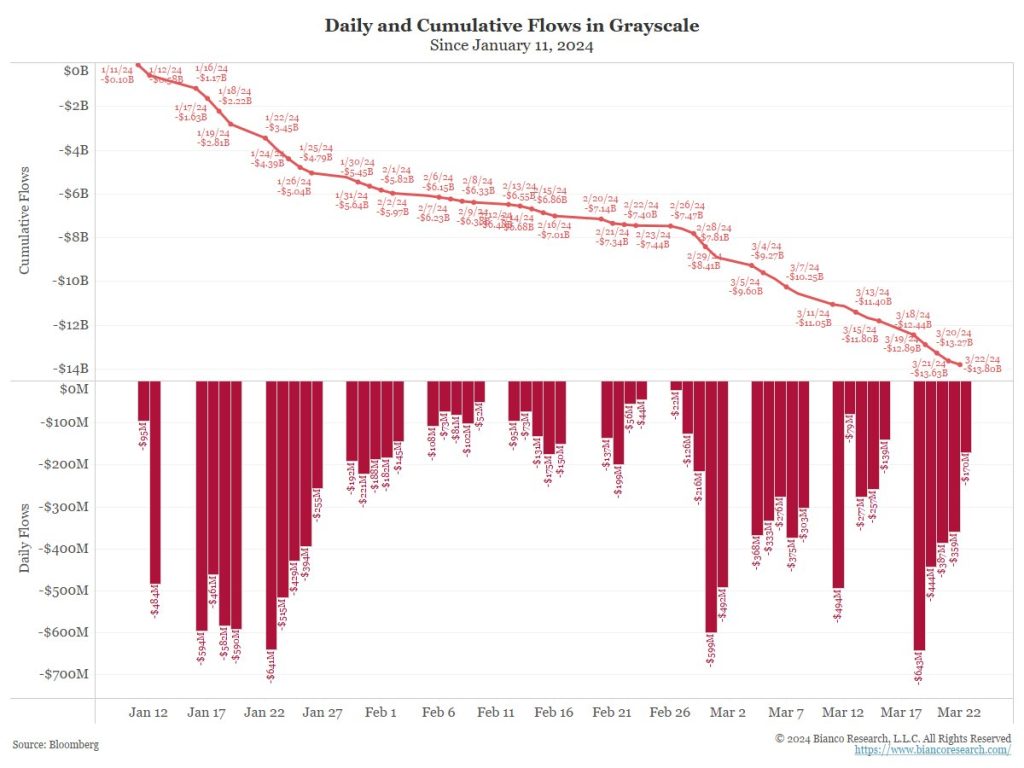
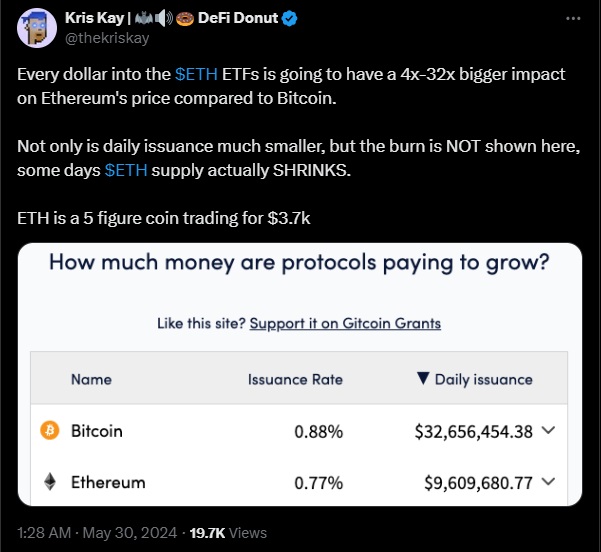
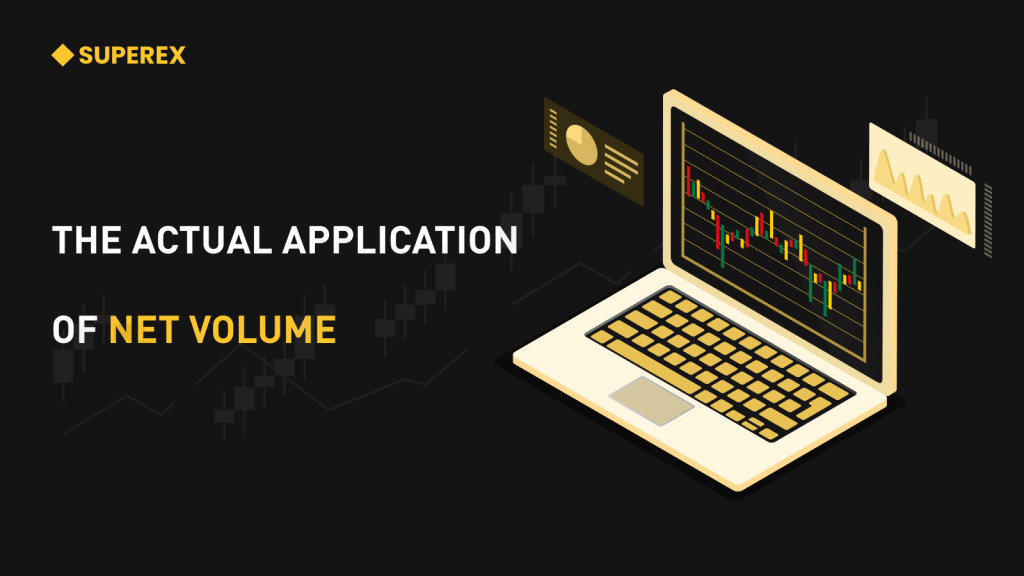
… [Trackback]
[…] Read More Info here to that Topic: x.superex.com/academys/markets/2846/ […]
… [Trackback]
[…] Read More on on that Topic: x.superex.com/academys/markets/2846/ […]
… [Trackback]
[…] Info to that Topic: x.superex.com/academys/markets/2846/ […]
… [Trackback]
[…] Read More here on that Topic: x.superex.com/academys/markets/2846/ […]
… [Trackback]
[…] Read More Info here to that Topic: x.superex.com/academys/markets/2846/ […]
… [Trackback]
[…] Read More on on that Topic: x.superex.com/academys/markets/2846/ […]
… [Trackback]
[…] Here you will find 27194 more Information on that Topic: x.superex.com/academys/markets/2846/ […]
… [Trackback]
[…] Read More Info here to that Topic: x.superex.com/academys/markets/2846/ […]
… [Trackback]
[…] Read More Information here on that Topic: x.superex.com/academys/markets/2846/ […]
… [Trackback]
[…] Read More Information here to that Topic: x.superex.com/academys/markets/2846/ […]
… [Trackback]
[…] Read More here on that Topic: x.superex.com/academys/markets/2846/ […]
… [Trackback]
[…] Information on that Topic: x.superex.com/academys/markets/2846/ […]
… [Trackback]
[…] Read More on that Topic: x.superex.com/academys/markets/2846/ […]
… [Trackback]
[…] Information on that Topic: x.superex.com/academys/markets/2846/ […]
… [Trackback]
[…] Information on that Topic: x.superex.com/academys/markets/2846/ […]
… [Trackback]
[…] Here you will find 94646 more Info on that Topic: x.superex.com/academys/markets/2846/ […]
… [Trackback]
[…] Read More on on that Topic: x.superex.com/academys/markets/2846/ […]
… [Trackback]
[…] Read More on on that Topic: x.superex.com/academys/markets/2846/ […]
… [Trackback]
[…] Read More on that Topic: x.superex.com/academys/markets/2846/ […]
… [Trackback]
[…] Here you will find 83147 additional Info on that Topic: x.superex.com/academys/markets/2846/ […]
… [Trackback]
[…] Read More Info here to that Topic: x.superex.com/academys/markets/2846/ […]
… [Trackback]
[…] There you will find 96610 additional Info on that Topic: x.superex.com/academys/markets/2846/ […]
… [Trackback]
[…] There you can find 84968 more Information on that Topic: x.superex.com/academys/markets/2846/ […]
… [Trackback]
[…] Info on that Topic: x.superex.com/academys/markets/2846/ […]